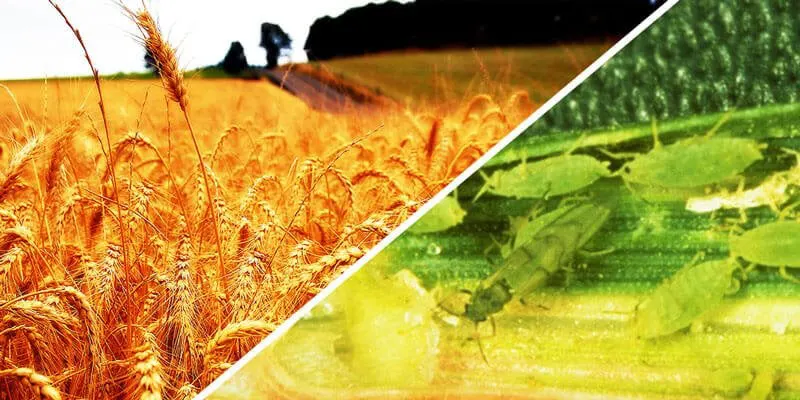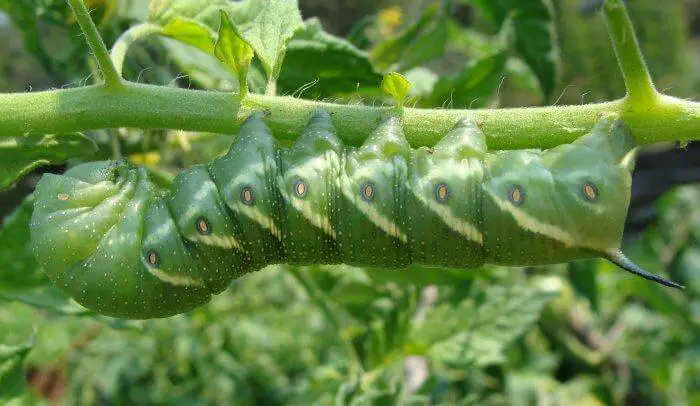Genetics and a second Green Revolution: Gene editing essential to address increasing crop losses as warming temperatures cause a surge in insect populations
Genetics and a second Green Revolution: Gene editing essential to address increasing crop losses as warming temperatures cause a surge in insect populations


Our research team at Michigan State University’s Plant Resilience Institute watched what happened in hotter weather when hornworm caterpillars attacked a tomato plant. The tomato lost. We saw a surprising trade-off by the plant during the heat wave: It defended itself against the caterpillars but this effort prevented it from dealing with the harmful effects of heat. This caused the plant to overheat, which strengthened the caterpillars’ hand.

A study by researchers in 2018 predicted that each degree of global warming will increase crop loss from insects by 10% to 25% because insect populations and their appetites surge in warm temperatures. Other climate-related variables, including prolonged droughts or floods, are likely to compound those losses.
But although scientists have identified these varied challenges to food production, they still don’t know much about how the combination of heat and insects will affect the plants’ built-in defense systems.
How plants fight off insect pests
Unlike animals, plants cannot run or hide from predators. Instead, plants produce an arsenal of toxic chemicals that repel attack by insects and other plant consumers.
Producing these compounds is costly and often stunts their growth, so plants deploy this chemical defense arsenal only when damaged by a chewing insect. This process is triggered by the plant wound hormone, jasmonate, which tightly controls the biosynthesis, distribution and storage of chemical defense compounds that repel insects.
For more than 20 years, we have studied how jasmonate protects plants from insect herbivores. Only recently have we begun to think about how rising global temperatures influence this common plant defense mechanism.
Heat and the hungry caterpillar
In our study we challenged tomato plants with hornworm caterpillars under either normal temperature conditions: 82 degree F days (about 28 degrees C) and 64 degree F nights (about 18 degrees C). We also simulated heat waves, with temperatures rising to 100 F (38 C) in the daytime and falling to 82 F (28 C) at night for several days.
The plants responded to the hotter temperatures by intensifying production of jasmonate and, as a consequence, increasing the output of various defense compounds. Even so, insects ate the plants relentlessly in the heat.
Meanwhile, a parallel study by our team found that moderate increases in temperature speeded up the insects’ metabolism so that they ate faster and did more damage to the plants. Although tomato plants fought hard with their chemical response, they couldn’t neutralize the insects’ powerful heat-triggered eating stimulus.
Insects + heat = double trouble
Plants use two strategies to cool down when temperatures get too high. They will open their tiny leaf pores, which are called stomata, releasing water that cools them much as sweating cools humans. Plants also combat heat stress by lifting their leaves away from the hot soil, perhaps in search of a cool breeze.
We unexpectedly discovered in our work that tomato plants challenged by caterpillars at the warmer temperature didn’t do these things, and thus failed to cool their leaves.
In our follow-up experiments, we found that when caterpillars ate its leaves and the plant activated the hormone jasmonate, this blocked the opening of the tiny stomata, and also prevented leaves from lifting up to cool. The plant couldn’t deploy its cooling response, and at the same time photosynthesis (making food from sunlight and carbon dioxide) was reduced.
These circumstances effectively slow the growth of the plant. Thus, although tomato plants can cope well with insect attacks or elevated temperature, if those two stresses come at the same time, that spells double trouble. The result is rapid defoliation by hungry caterpillars plus leaf overheating.
Studying plants in real environments
Why insect attack keeps the plants from cooling themselves remains a mystery. However, when plants close their stomata during an insect attack, they conserve water by preventing it from evaporating from wounded leaves. We think this response may benefit the plant when water is in short supply, which is often the case during heat waves.
We plan to address this question by studying plants grown in the rough-and-tumble of natural environments, rather than under highly controlled laboratory conditions. We believe such studies are necessary to develop crops that can withstand both heat and wound stress.
Making more resilient plants
Many experts estimate that agricultural productivity must double in the next 30 years to meet the demands of a rapidly growing population. Current yield trajectories for major crops, combined with the uncertain impacts of a changing global environment, suggest that the world will fall well short of this demand using conventional agricultural practices.
The United Kingdom’s Royal Society and other scientific organizations have called for a Second Green Revolution that will permit the sustainable intensification of agriculture through development of crops that are more resilient in face of increasingly harsh environmental conditions.
Recent technological advances, from genomics and gene editing to computational and data science approaches, provide researchers with unprecedented opportunities to work toward this goal. In achieving a better understanding of the complex interactions of heat and insect attacks, we hope that our research may inform new strategies to increase plant resilience in a warming world.
Gregg Howe is a Professor of Biochemistry and Molecular Biology, Michigan State University
Nathan Havko is a Postdoctoral Fellow in Plant Research, Michigan State University
A version of this article was originally posted at The Conversation and has been reposted here with permission. The Conversation can be found on Twitter @ConversationUS

 | Videos | More... |

Video: Nuclear energy will destroy us? Global warming is an existential threat? Chemicals are massacring bees? Donate to the Green Industrial Complex!
 | Bees & Pollinators | More... |

GLP podcast: Science journalism is a mess. Here’s how to fix it

Mosquito massacre: Can we safely tackle malaria with a CRISPR gene drive?

Are we facing an ‘Insect Apocalypse’ caused by ‘intensive, industrial’ farming and agricultural chemicals? The media say yes; Science says ‘no’
 | Infographics | More... |

Infographic: Global regulatory and health research agencies on whether glyphosate causes cancer
 | GMO FAQs | More... |

Why is there controversy over GMO foods but not GMO drugs?

How are GMOs labeled around the world?

How does genetic engineering differ from conventional breeding?
 | GLP Profiles | More... |

Alex Jones: Right-wing conspiracy theorist stokes fear of GMOs, pesticides to sell ‘health supplements’




 Trust issues: What happens when therapists use ChatGPT?
Trust issues: What happens when therapists use ChatGPT? Fighting deforestation with CO2: Biotechnology breakthrough creates sustainable palm oil alternative for cosmetics
Fighting deforestation with CO2: Biotechnology breakthrough creates sustainable palm oil alternative for cosmetics California, Washington, Oregon forge immunization alliance to safeguard vaccine access against federal undermining
California, Washington, Oregon forge immunization alliance to safeguard vaccine access against federal undermining Viewpoint — Fact checking MAHA mythmakers: How wellness influencers and RFK, Jr. undermine American science and health
Viewpoint — Fact checking MAHA mythmakers: How wellness influencers and RFK, Jr. undermine American science and health 30-year-old tomato line shows genetic resistance to devastating virus
30-year-old tomato line shows genetic resistance to devastating virus Viewpoint: Video — Big Solar is gobbling up productive agricultural land and hurting farmers yet providing little energy or sustainabilty gains
Viewpoint: Video — Big Solar is gobbling up productive agricultural land and hurting farmers yet providing little energy or sustainabilty gains The free-range chicken dilemma: Better for birds, but with substantial costs
The free-range chicken dilemma: Better for birds, but with substantial costs ‘You have to treat the brain first’: Rethinking chronic pain with Sanjay Gupta
‘You have to treat the brain first’: Rethinking chronic pain with Sanjay Gupta
